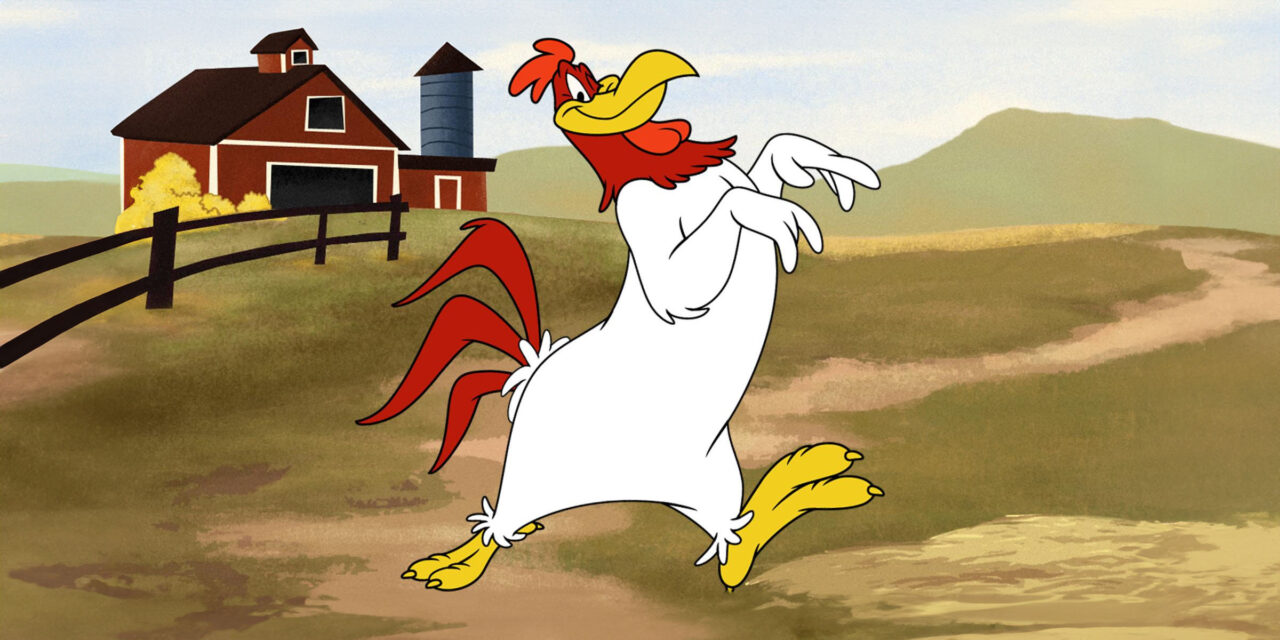When I was growing up, one of the cartoon characters I’d see from time to time was Foghorn Leghorn. A boisterous, self-absorbed rooster with a Southern accent and a bit of a stutter, he was defined by arrogance. Sometimes he would take a mentoring role toward a younger male chick, and he would encourage masculinity. Today in liberal circles he would be described as a chauvinist, promoting patriarchy, and certainly a “mansplainer“.
But why the name? What does a rooster have to do with a boat horn?
I always assumed that “Foghorn” was a comic variant of “blow-hard”, because the character was loud. And “Leghorn” was a nonsense rhyme, because after all, it’s a cartoon.
Wrong!
I’ll explain, but promise to stick with me until the end. It’s a longer story than you might expect.
Broilers and Layers
During my time working in Livestock Feed Formulation (at my software company in the late 90s), I learned that “Leghorn” actually means something! No way.
To understand a Leghorn, first you have to know that there are two kinds of commercially farmed chickens: “Broilers” and “Layers”. In short, the chickens raised for eating are bred to grow fast, while the chickens meant for egg production are a different breed.
Broilers: Fun fact, the difference between a Cornish Game Hen, a Broiler, and a Roaster is how long it’s alive. It’s the same animal, just killed after either 4 weeks, 6 weeks, or 8 weeks. So, umm, a Cornish Game Hen is not Cornish, it’s not Game, and there’s only a 50% chance it’s a Hen. But never mind about the Broilers; it’s the Layers we need for this discussion.
Layers: So, only female chickens (hens) lay eggs. You might figure that a farm with egg production would use the males for meat and the females for laying eggs. And on a small family farm you might be right. But on a big industrial farm, you’d be very wrong.
The Broiler breeds are optimized to grow fast and produce lots of meat. In the US they produce especially large amounts of breast meat, because Americans eat more white meat than, say, Eastern Europeans who prefer the dark.
But Laying Hens are optimized for producing lots of eggs over the course of a year or so. They are not optimized for meat. Economically, there is no point in feeding slow-growing “layer” roosters that don’t lay eggs or make the best meat. The males are useless. As soon as the chicks can be “sexed” (identified as male or female), the males are killed. The timeline is around 72 hours from hatching.
Wow, brutal. So, If an egg farm hatches 200 chicks, after 3 days they will keep 100 females for laying eggs, and they will slaughter 100 baby males because they’re useless? Correct.
But wait! How did the egg farm hatch 200 eggs? Where do the eggs come from, if they sell their eggs to the grocery store? Well, yes, of course they sell most of the eggs. And the eggs in the grocery store are not fertile. They are laid by hens which have not been anywhere near a male. When you eat eggs there is 0% chance you’re killing a baby chick. And if you find a tiny dark spot inside the egg, no it’s not an embryo. But I digress.
Back to the hatched eggs. How does the egg farm get a new generation of Laying Hens? Well, most of the hens are kept away from the males, but a small fraction of the hens are allowed to get fertilized. That’s how each generation leads to the next. I believe it’s common for around 90% of farm’s hens to be used for production, and 10% for breeding.
But if the males are all killed when they’re three days old, then who is around to fertilize these eggs for the next generation?
Well, when I said they’re all killed, I meant “all except for a few”. An extremely small number of male Layers are kept alive and raised for breeding. Guess what those males are called.
Leghorns.
A Leghorn is a Male of the Layer breed.
The entire job of the Leghorn rooster is to keep the breeding hens constantly fertilized, so that all their eggs yield chicks for the next generation. So if 10% of the females are set aside for breeding, then you might guess 10% of the males are set aside to be Leghorns? Nope. One healthy male Leghorn can keep ten female Laying Hens fertilized.
99% of male “Laying Hens” are killed at birth. The surviving 1% of males are called Leghorns, and their entire life is spent breeding with 10 females at a time.
No wonder the cartoon character had swagger like that.






Once again, a great read!
Thank you.